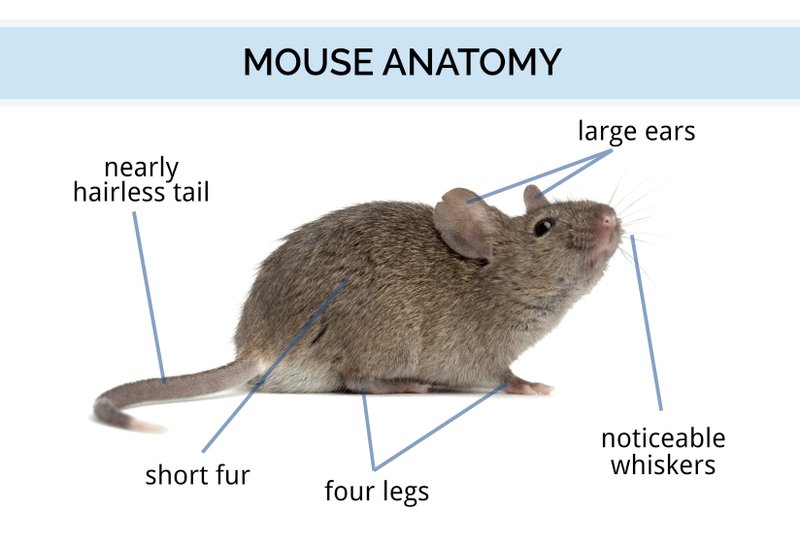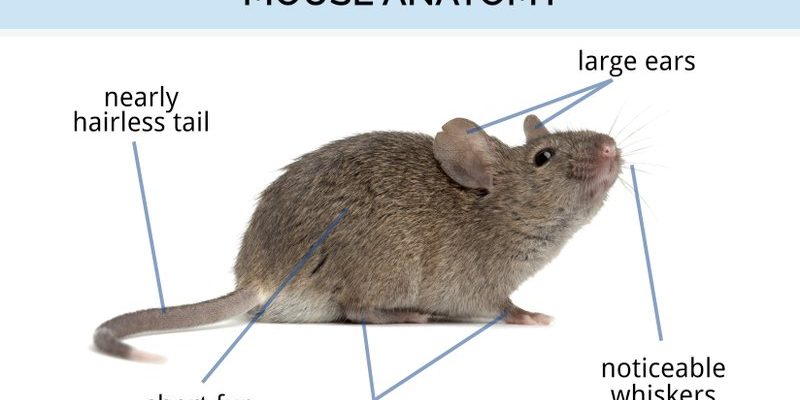
Honestly, standard mice can be some of the most fascinating and low-maintenance pets you can have. Whether you’re looking for a cute addition to your family or just curious about these small critters, there’s a lot to unpack. Let’s dive into their traits, appearance, and temperament, so you can understand what makes standard mice truly special!
Understanding Standard Mice: A Quick Overview
Standard mice, commonly known as Mus musculus, belong to the rodent family. They’re small, with an average weight of about 1 to 2 ounces and a length ranging from 2 to 4 inches, not including the tail. This tiny size makes them easy to handle and care for, which is a big plus for first-time pet owners.
One fascinating trait of these mice is their adaptability. They thrive in various environments, whether in a cozy cage at home or in the wild. In the wild, standard mice often form colonies, highlighting their social nature. As pets, they prefer to live in pairs or small groups, which can keep them entertained and happy. So if you’re considering adopting one, think about getting a couple to keep each other company.
You might be wondering about their lifespan. On average, standard mice live around 2 to 3 years when cared for properly. While that may seem short, their playful and curious demeanor can fill that time with joy. Plus, their short lifespan means you can enjoy the experience of raising a pet without a long-term commitment.
Appearance: What Do Standard Mice Look Like?
Standard mice have a distinctive look that many find endearing. With their small, rounded bodies and long tails, they’re practically adorable! Most often, they have a smooth coat that can come in various colors, from classic gray and brown to white and black variations. Did you know that the color of a mouse’s fur is often a reflection of its genetics? Some people even breed mice for specific colors and patterns!
Their eyes are typically black and quite expressive, which adds to their charm. When you see a mouse peek out of its bedding with those bright eyes, it’s hard not to smile. Their ears are large and fluffy, helping them to hear even the smallest sounds around them, which ties into their instinctive behavior.
If you’ve ever watched a mouse run, you’ve likely noticed how agile they are. They can squeeze into tight spaces and are excellent climbers. This agile nature means you need to ensure their enclosure is secure—mice are known escape artists!
Temperament: Let’s Talk About Their Personality
Now, let’s get into the fun part—this is where the true personality of standard mice shines. Generally, these little guys are friendly, curious, and full of energy. They love to explore their surroundings and will often spend time climbing and playing in their cages. If you’re patient and handle them regularly, they can become quite affectionate.
You might even find that they have individual personalities. Some mice are more adventurous, while others may be a bit shy. Understanding their temperament can help you tailor their environment to make them feel comfortable. For instance, if you have a shy mouse, creating cozy hiding spots in their cage can help them feel safe.
Mice are also very social creatures. They enjoy the company of their peers, so you’ll often see them grooming, playing, and snuggling with one another. This social aspect is crucial, so if you’re getting a mouse, consider adopting more than one. Just make sure they’re from the same litter or are introduced properly to avoid territorial issues.
Habitat: Creating a Comfortable Home for Your Mouse
Setting up a suitable habitat for standard mice might seem daunting at first, but it’s quite simple once you know what you need. A spacious cage with plenty of ventilation is crucial. Look for a cage with horizontal bars, as mice love to climb. A minimum size for two mice is around 24 inches long and 12 inches wide.
Here are some essentials to include in your mouse’s habitat:
- Bedding: Use safe bedding like aspen shavings or paper-based options. Avoid cedar and pine shavings, as they can be harmful.
- Hideouts: Provide small houses or tunnels for your mice to explore and hide. It gives them a sense of security.
- Wheel: A running wheel is essential for exercise. Choose one that’s solid with no gaps to prevent injury.
- Food and water: Use a small dish for food and ensure a reliable water source, like a water bottle with a sipper.
Making sure their habitat is fun and engaging can positively impact their mood and behavior. Rotate toys, add climbing structures, and ensure they have plenty of chew items to keep them stimulated. Remember, a happy mouse is a healthy mouse!
Feeding Your Standard Mouse: What to Include in Their Diet
Feeding your mouse properly is one of the keys to their health and happiness. Their primary diet consists of commercial mouse pellets, which provide a balanced nutritional base. However, it’s also essential to introduce variety. Think of it like making sure you have a well-rounded meal plan!
You can supplement their diet with a range of healthy treats, such as:
- Fresh fruits: Small pieces of apples, bananas, or berries make great snacks.
- Vegetables: Try offering tiny bits of carrots, broccoli, or spinach.
- Seeds: A variety of seeds (like sunflower seeds or millet) can be a good addition to their diet.
It’s important to avoid feeding them citrus fruits and foods high in sugar or fat. These aren’t suitable for their little tummies and can lead to health problems. Keep an eye on their weight, too—obesity can be a concern in pet mice. Adjust their food portions as needed to maintain a healthy weight.
Common Health Issues to Watch For
Like any pet, standard mice can face health challenges, but many issues can be easily managed with proper care. One common problem is respiratory infections, often caused by poor housing conditions, such as inadequate ventilation or dirty bedding. Keep their cage clean and well-aerated to reduce the risk of illness.
Another thing to keep an eye on is their teeth. Mice have continuously growing incisors, which means they need chew toys to help wear them down. If their teeth become overgrown, it can lead to eating difficulties and other health problems. Regularly check their teeth and provide safe items to gnaw on, like wooden blocks or cardboard.
Lastly, watch for signs of stress or discomfort. If your mouse seems unusually lethargic, isn’t eating, or shows changes in behavior, it might be time to consult a vet familiar with small animals. Being proactive about their health can lead to a longer, happier life for your little friend.
Wrapping Up: The Joy of Keeping Standard Mice
Bringing a standard mouse into your home can be a rewarding experience. They’re playful, sociable, and can even develop unique personalities that make them delightful companions. Understanding their traits, appearance, and temperament helps you create a nurturing environment that promotes their well-being.
Whether you’re drawn to their small size, engaging behaviors, or the sheer joy of having a little housemate running around, mice are more than just cute—they’re full of surprises and charm. With the right setup and care, you’ll have a furry friend that brings happiness to your life.
So if you’re ready to embrace the world of standard mice, go ahead! They just might be the perfect pet for you.

